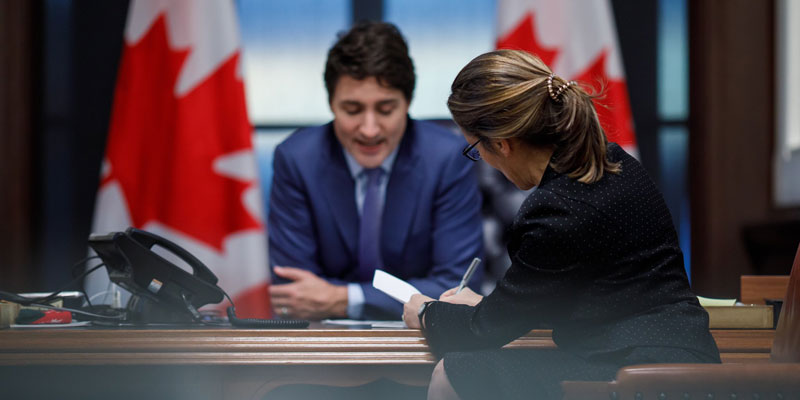Federal government’s OAS increase typifies bad policy

While much has been made of the recent federal budget, which includes new and expanded spending on stimulus, national daycare, new green initiatives and much more, there’s been little discussion on increased payments to seniors—one of the most ill-considered policies announced in the budget.
In the budget, the Trudeau government plans to spend $12 billion (which used to be serious money in Canada) over the next five years to finance a 10 per cent increase in the Old Age Security (OAS) benefit starting in 2022, and a onetime $500 payment to seniors over age 75 who receive OAS. The government estimates the continuing benefit 3.3 million seniors and provide roughly $766 in extra income annually. Coincidentally, the onetime payment is scheduled for this fall, when many observers expect an election to be called.
According to the budget, this spending increase is necessary because “many seniors have faced economic challenges as they took on extra costs to stay safe” during COVID and “many seniors are living longer and relying on monthly benefits to afford retirement.” The first statement seems to contradict other aspects of the government’s budget, which assure Canadians that we’re emerging from the pandemic and starting to return to normal.
The basics of OAS are important to understand as they explain why the increase is bad policy. OAS is a flat benefit paid to eligible seniors over age 65. Eligible seniors with incomes up to $79,845 (2021) receive the full benefit, which is roughly $618 per month. Seniors with higher incomes experience a 15 per cent clawback, which means seniors with incomes between $79,846 and $129,260 receive partial OAS benefits. And OAS benefits are determined individually, which means a couple can have an annual household income up to almost $160,000 and still receive full OAS benefits, and household income up to $258,520 and receive partial OAS benefits.
The most obvious problem with the government’s policy is that it doesn’t target assistance to those in need. This is a consistent problem with the Trudeau government, but perhaps most glaring in this instance because there’s already an existing program, the Guaranteed Income Supplement, which provides additional income support to low-income seniors. If the Trudeau government wants to target assistance to those in need while limiting the costs, it could simply increase GIS benefits.
Finally, the government is proposing this poorly-targeted increase in the OAS, which on the surface looks like politics trumping good policy in advance of an election, during a time of historical borrowing. The federal government borrowed $354.2 billion last year, and in a best-case scenario expects to borrow another $331.9 billion over the next five years, bringing the national debt (adjusted for financial assets) to at least $1.5 trillion. If economic growth is slower, and inflation and/or interest rates are higher than expected, the borrowing could be much higher than planned.
In that context, the prudent policy for a government concerned with the incomes of seniors would have been to target assistance to those in need, thus limiting the costs (i.e. borrowing) of the expanded program. Instead, the Trudeau government once again demonstrates that it’s not concerned about spending beyond its means or limiting debt accumulation.
Authors:
Subscribe to the Fraser Institute
Get the latest news from the Fraser Institute on the latest research studies, news and events.



